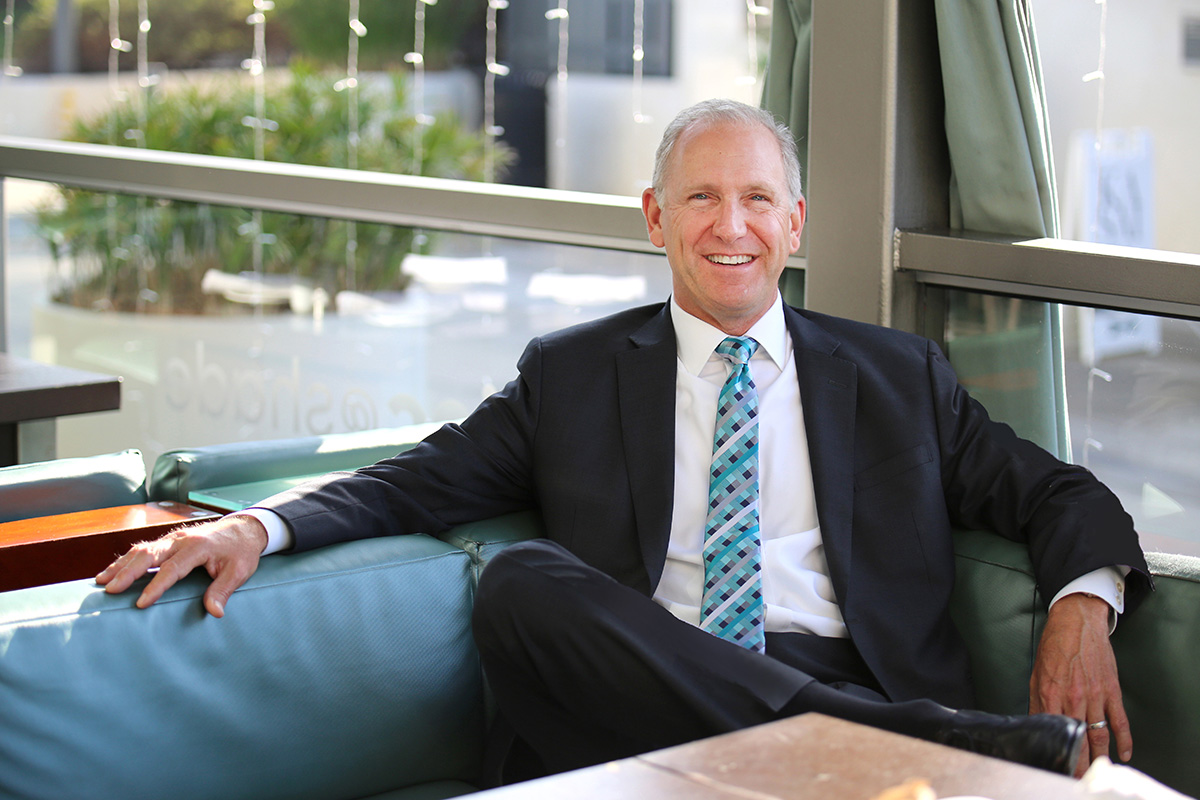Debunking The Peter Principle
Our old foe the Peter Principle, first articulated as a tongue-in-cheek parody by Dr. Laurence J. Peter back in 1968, states simply that “In a hierarchy, every employee rises to his level of incompetence.” Or in Dr. Peter’s words, “the cream rises until it sours.”
I don’t necessarily believe in the Peter Principle. It presupposes that each person has an incompetence ceiling that is fixed and immutable. Terminal. A threshold beyond which one can no longer contribute value as a member of a team.
While it is true that at multiple intersections of our lives and careers, we encounter challenges that require new skills and mindsets, we at Hallett Leadership differ with the Peter Principle in our assessment of these intersections. Rather than terminal endpoints to our career trajectories, we view them as opportunities to grow and develop our potential.
This process of growing and developing into our potential – and beyond the threshold of our alleged “incompetence” – begins with a single word:
Training.
A Perennial C-Suite Conversation
Regarding the desirability and value of training, there’s a well-known theoretical exchange between the CEO and CFO of a large company, who sit opposite one another in a board room reviewing a proposal for a high-performance leadership program.
The CFO says: “What if we invest in training our people and they leave?”
To which the CEO responds: “What if we don’t train them, and they stay?”
The CEO grasps that failing to invest in developing the company’s workforce is even more risky than the failure to retain valuable employees who take their new skills to competitors for higher salaries. Why? Because whether it is incompetence or lack of competence affecting team members, each scenario left untreated leads to the same negative outcomes: entropy and decline.
However, while incompetence is terminal, lack of competence is not. The two terms are often conflated with each other, but they are different. Lack of competence is actually an invitation to growth and development.
It is also an invitation to disprove the Peter Principle
Lack Of Competence ≠ Incompetence
No matter what the Peter Principle says, in most cases human beings do not plateau at their level of incompetence, but at the level just beyond the point to which they’ve been trained.
We do not call newborn infants “incompetent crawlers.” Nor do we call toddlers “incompetent readers.” They simply haven’t yet been trained to be competent in those areas!
So why, when a high-performing individual contributor is promoted into a managerial role and struggles with the new responsibilities and demands of the job, can his or her boss be so swift to pronounce him or her an “incompetent manager?”
The Case of Mike, Spreadsheet Wizard
To make our case for debunking the Peter Principle through training, let’s talk about a hypothetical Peter Principle victim that we’ll refer to as Mike.
Mike is a savant with numbers and generates excellent financial documents. In his several years with the company, he has dazzled management with his exemplary individual performance.
Indeed, Mike has been industrious and effective in his job. He spends his days in the back of the office, ear buds in, creating one outstanding spreadsheet after another.
Then the day comes when Mike is promoted to manager. Now three people report to him. Mike’s boss has begun receiving complaints and expressions of frustration from each member of Mike’s staff. Mike, apparently, has been continuing to do what he knows best. That is, getting the job done all by himself, while his team members desire greater communication, direction and oversight.
According to the Peter Principle, the proverbial cream has risen to the top and it has soured. Game over. When the firing, dismissal or demotion comes down from his boss, Mike is poised to become just another casualty on Peter’s hit list.
Fortunately for Mike, his boss believes in him and she appreciates his potential. Believing that Mike’s lack of managerial competence can be rectified by training, she nominates Mike to participate in their company’s nine-month intensive leadership training cohort. She knows that it takes more than a one-week seminar to transform behavior for the long term.
The Maintenance Cycle & The Growth Cycle
At the program orientation, Mike finds himself in a room among selected peers from other departments and divisions of the company. After introductions and ice-breakers, the facilitator presents The Maintenance Cycle and the Growth Cycle.
The facilitator describes the choice each attendee has before them: to continue down the path each has been taking, or to pursue growth to prepare for future challenges that are fueled by the disruption we see all around us today.
The Maintenance Cycle illustrates the traveler who continues exhibiting the fixed beliefs and behaviors of the past, beliefs and behaviors that have enabled Mike to achieve everything he has accomplished up to this point, but that are preventing him from developing further. People operating in this cycle tend to fear change and attempt to protect the status quo, which is ill-advised in the face of constant disruption.
In the Growth cycle, however, the traveler is open to change and is willing to risk in order to grow and develop. That growth and development will likely enable the traveler to be more creative and innovative, and to confront the challenges of a continually disruptive world more effectively than the strategies deployed up until now.
At the end of first session, Mike is filing out the door with his peers, considering the choice at hand. He thinks to himself:
“You know what… there may be something worthwhile in this growth cycle idea… If the company is willing to invest in me, I think I’ll give it a try.”
Entering the Growth Cycle
If debunking the Peter Principle means addressing lack of competence through training, and training means entering the Growth Cycle… then what is required to successfully navigate the growth cycle?
Being at least 1% open. Open to learn, open to change, and willing to risk in order to grow.
This is why at Hallett Leadership, we spend time at the outset of our Accelerated Leadership Program discussing the value in taking risks to grow and develop. This can be a particularly sensitive issue for individuals we work with, because many of those selected by management for training and development are often high-performing, competitive individuals who aren’t accustomed to making mistakes – especially not in view of their peers.
In the following weeks and months, Mike is determined to shift out of his comfort zone into a growth cycle. He finds it a bit disconcerting at first. He is, after all, an individual who enjoys structure, predictability and order. Putting everything in the right place.
With the support of other members of his cohort, Mike keeps an open attitude and fully engages in challenging and thought-provoking experiential exercises on a weekly basis. He participates in feedback exercises, learning about his blind spots and things he had no idea he was projecting out to the world. He learns how to evaluate others. He gains experience with impromptu speaking – something he would never have considered doing before. By the time the program reaches its halfway mark, the cohort has developed a high level of mutual trust and respect, and its members push each other to be their best. And in this process, Mike begins to experience his own authentic leadership.
Back with his staff, Mike is empowering, encouraging, and collaborative. This is thanks in large part to the fact that he was given the opportunity to stumble and develop his new competencies over the course of several months among his peers in the cohort, in order to fully integrate his learnings into his day-to-day behavior. Morale among his staff is high. They are engaged and performing together at a new level.
A Leader Emerges
The nine-month leadership development program culminates with the presentation of small-team projects to management. Management raptly listens as the teams provide fresh perspectives on opportunities and challenges currently facing the organization and its industry.
Mike leads off the presentation, and is an energy source for his entire presentation team. He feels a sense of loyalty to his boss and the company for investing in his personal and professional growth.
Over the course of his participation in the program, Mike’s staff has been inspired by his leadership and high-performance growth – and they themselves have in turn become more engaged, productive and loyal.
Mike enjoys his work more than ever, and as he has risen in the leadership structure, he has embraced a new reality. Mike will be spending considerably more time coaching, mentoring and strategizing with people than he will cranking out impeccable financial documents. Thrilled with the opportunity to have a greater impact, Mike has truly embraced the terms of his new leadership role.
Stories like Mike’s are common to true leadership transformation programs. This is because despite what The Peter Principle says, people don’t rise to their level of innate incompetence – they rise to the point just beyond the level for which they’ve been trained.
So, train and develop your people, ensuring they have the tools necessary to lead teams, enabling them to take part in elevating the entire organization. You won’t regret it, and you will never look back.






